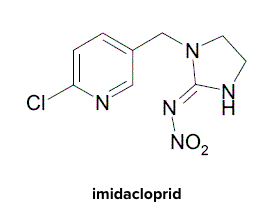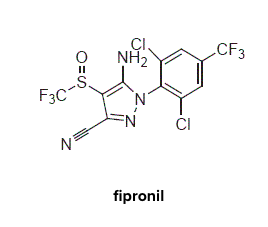
Beekeepers have been confronted for several years with problems of abnormal mortality of bees. They have been led to suspect the action of insecticides widely used in agriculture.
- Two molecules indicted
Beekeepers have been confronted for several years with problems of abnormal mortality of bees. They have been led to suspect the action of insecticides widely used in agriculture. It must be well aware that an insecticide is a poison not only for insects but also , in the vast majority of cases, for other animal species (very rare exception known: BT toxin , from Bacillus thuringiensis , insect-specific microbe ). Choosing an insecticide is therefore an acceptable compromise.
- it must be effective for target insects
- it must be as toxic as possible to humans and domestic animals, at least under the usual conditions of use
- it must be non- remanent , that is to say it must degrade relatively quickly in the environment so that its action is strictly limited in time
- in normal conditions of use should be as low as possible to share non-target species in treated areas or in their neighborhood, whether other insects, fish , birds .. .
We understand that it is difficult to meet all these conditions, the last being also that which is most rarely satisfied.
The first insecticide implicated by beekeepers was Gaucho , used to coat sunflower and cornseeds . It should be known that the seeds, especially at the time of germination, then the roots of plants, are likely to be damaged by various insects living in the soil. The coating of seeds with a preparation containing an insecticide is therefore likely to protect them and increase crop yields.
The Gaucho has been implicated because it is a systemic insecticide , that is to say that it is distributed throughout the plant. It can be found in nectar and pollen, and beekeepers have had to struggle a long time to make it clear that the apparently low concentrations in pollen and nectar have a negative impact on the health and behavior of humans. bees. In the end, the use of Gaucho was banned for the coating of sunflower seeds in 1999, because this plant is abundantly pollinated by bees. Unfortunately it was not banned for maize, the use of which by bees, although real, was less known.The material active Gaucho is the imidacloprid , molecule that has a strong resemblance to the nicotine . It acts in the same way by causing overstimulation of a category synapses to acetylcholine with receptors called nicotinic receptors. Neurological disorders caused in insects produce motor incoordination, convulsions and death.
The case of Gaucho has been recalled for memory, but the news is currently focused on another insecticide: the Regent TS . The active molecule is totally different: it is Fipronil .
- Mechanism of action of Fipronil
Fipronil was discovered and studied by Rhône-Poulenc between 1985 and 1987 and was marketed in 1993. As a result of restructuring and various commercial operations this molecule then passed into the fold of Aventis, Bayer and finally BASF. It is the only member of a new class of insecticides: phenylpyrazoles.
This molecule acts by disrupting the operation of neuronal receptors of GABA (the acid gamma-aminobutyric acid, one of the neurotransmitters important in the central nervous system ). Since these receptors have an inhibitory role, their blockage leads to nervous hyperexcitability which eventually leads to the death of insects. The affinity of Fipronil for mammalian receptors being lower than that observed in insects, this molecule is less toxic to humans and domestic animals, a desirable property for an insecticide.
- Uses of Fipronil
Fipronil is used in many preparations for agricultural and non-agricultural use, as well as to eliminate ants , cockroaches, to control locust pests in some countries, against termites and finally in products to rid cats and dogs of fleas or ticks. Excluding veterinary products, France has approved at least 16 Fipronil-based products
- Issuance of sales authorizations
A phytosanitary product can not be marketed until it has received approval from the Ministry of Agriculture . For this purpose, the manufacturer submits a toxicological file for which the various data are established under his responsibility. This file must evaluate the various parameters of toxicity , as well as several ecotoxicological parameters intended to estimate the impact of the product on fauna and flora. This file is reviewed by the Toxicity Study Commission (COMTOX), a group of independent experts at the Ministry of Agriculture. This may request additional evaluations from the manufacturer. COMTOX’s findings are forwarded to a probate committee under the responsibility of the Director-General for Food.
There are two types of permissions:
- the provisional authorization of sale (APV) can be granted for a period of 5 years and renewed once, pending new information necessary for a final decision.
- Marketing Authorization ( MA ) is the standard procedure, but the product has to meet much more demanding criteria than for the VPA.
Surprisingly, it is the manufacturer itself, and not an independent body, that has to evaluate the toxicity of the product and provide it to the administration. One can imagine that the manufacturer has every interest in underestimating the risks to obtain a marketing authorization. This procedure is not unique to France: it is the one used by all countries. In fact the toxicological file must comply with a number of regulatory requirements and the manufacturer does not have any interest in falsifying the results. If this were discovered (for example, as a result of problems related to the use of the product), his liability would be seriously jeopardized in court. However, we can easily imagine that the manufacturer is not going tostandard protocol show acceptable toxicity.

